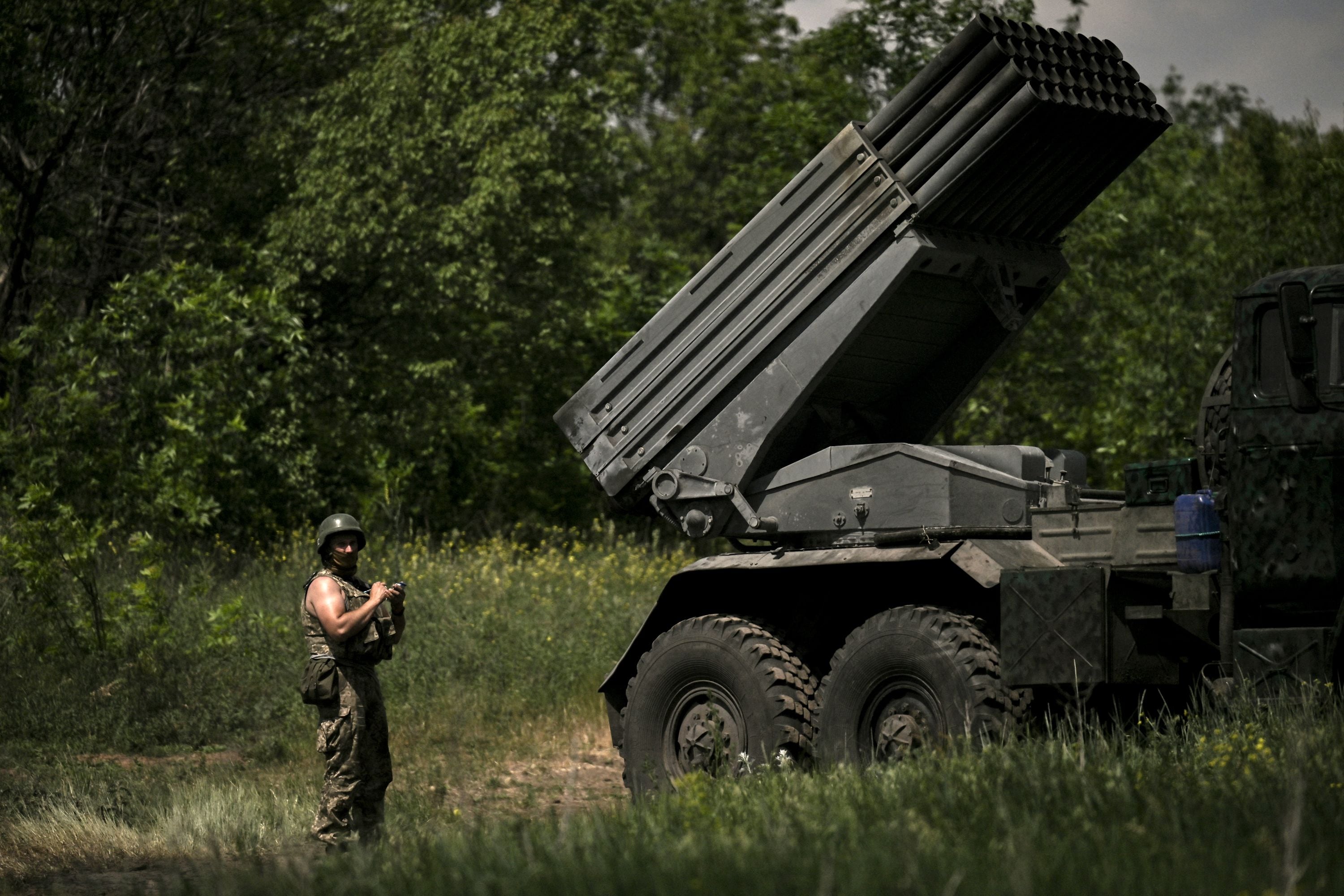WASHINGTON ― The U.S. State Department released plans Thursday to better track weapons supplied to Ukraine, voicing fears Russian forces could capture and use them to fabricate an attack by Ukrainian forces.
“Pro-Russian forces’ capture of Ukrainian weapons ― including donated materiel ― has been the main vector of diversion so far and could result in onward transfers,” the plan reads. “Russia probably will also use these weapons to develop countermeasures, propaganda, or to conduct false-flag operations.”
The warning comes amid Russia’s unfounded claims Ukraine is planning to use a “dirty bomb” on its own soil, which U.S. officials see as a potential pretext for Moscow to escalate the war. Ukrainian President Volodymyr Zelenskyy has also accused Russia of planning to blow up a huge dam near Kherson and blame it on Ukrainians.
Since Russia launched its war in Ukraine eight months ago, the U.S. has been speeding more than $17 billion in military aid, from shoulder-fired rockets, howitzers and armored vehicles to advanced air defense systems. U.S. lawmakers and officials in Europe, which is also providing billions in weapons, have in recent weeks stepped up calls for stiffer oversight.
The State Department is especially concerned about two classes of weapons: man-portable air defense systems, including the thousands of Stinger anti-aircraft missiles sent by the U.S., and anti-tank/all-purpose tactical guided missiles, including thousands of Javelins the U.S. sent.
The State Department said, as part of the plan, it is working with Kyiv to clear explosive remnants of the war, an activity that would enable “on-the-ground accounting for and securing of weapons,” the plan says.
“As in any conflict, we remain vigilant to the possibility that criminal and non-state actors may attempt to illicitly acquire weapons from sources in Ukraine, including members of the Russian military, during or following the conflict,” State Department spokesperson Ned Price said in a statement.
The one-page plan released Thursday offered a number of actions, some for next year, others for 2024 and beyond — but few details about how they would be implemented.
Among other steps in the plan, U.S. embassy personnel in Kyiv would help Ukraine increase weapons tracking. Beyond that, the State Department plans to bolster training for Ukrainian forces on protecting their borders and destroying found weapons and ammunition to deny them to non-state actors and protect civilians.
In the future, the U.S. also wants to deploy contracted de-mining units to work alongside Kyiv’s forces and train border forces to recognize man-portable air defense systems and anti-tank weapons.
So far, Ukrainian forces have been keeping small arms and other weapons from ending up on the black market and Ukraine has committed to safeguarding weapons donated by the U.S., but the plan acknowledges “the chaotic nature of combat can make this difficult.”
RELATED

This summer, the European Union launched a new platform to discuss organized crime in the region with an eye toward the illegal smuggling of diverted weapons. The law enforcement agency Europol said then it was working with Ukrainian officials to reduce the risk of illegal arms transfers.
Ukrainian Defense Minister Oleksii Reznikov, in a June interview with the Financial Times, pushed back against western concerns the country could become a source of smuggled weapons, but acknowledged it needed to expand its arms tracking systems.
Reznikov disclosed that some of Ukraine’s allies had sent military representatives to the country to observe the flow of their donated weapons and he invited others to follow suit. He also said Ukraine was using NATO software, acquired in 2019, to monitor the destination and use of weapons provided by the west.
“We need to survive. We have no reason to smuggle arms out of Ukraine,” he told the Financial Times.
The arms control community has been pressing the Biden administration for months to conduct stronger oversight. The number and variety of arms sent to Ukraine, and the potential they will overwhelm Ukraine’s ability to absorb and track them, have been worrisome to arms control advocates.
“The quantity of weapons that has gone to Ukraine already is larger than than any year to Afghanistan and Iraq since 9/11,” said Rachel Stohl, the director of Stimson Center’s conventional defense program. “This [State Department tracking effort] is very much focused on the most high-tech sophisticated weapons. Light weapons have a huge diversion risk.”
Stohl hailed the Biden administration’s new plan for addressing these concerns, but she said it lacks details about implementation and said its effectiveness remains to be seen.
“Some of the things they’re laying out should be done as a matter of course. You shouldn’t be transferring weapons to a recipient if you can’t be sure how those weapon are being used or by the people you intended to use them,” Stohl said.
Joe Gould was the senior Pentagon reporter for Defense News, covering the intersection of national security policy, politics and the defense industry. He had previously served as Congress reporter.








